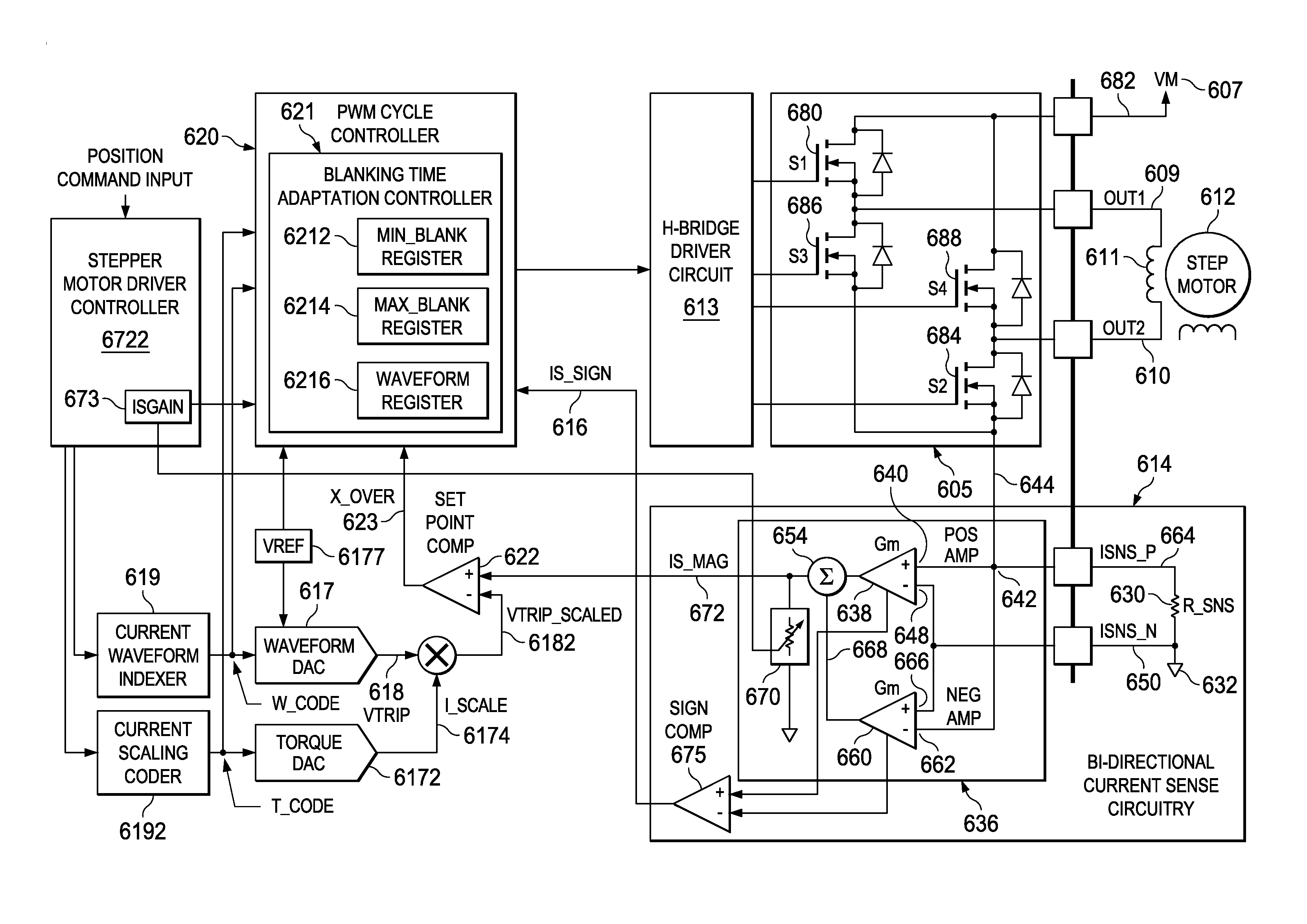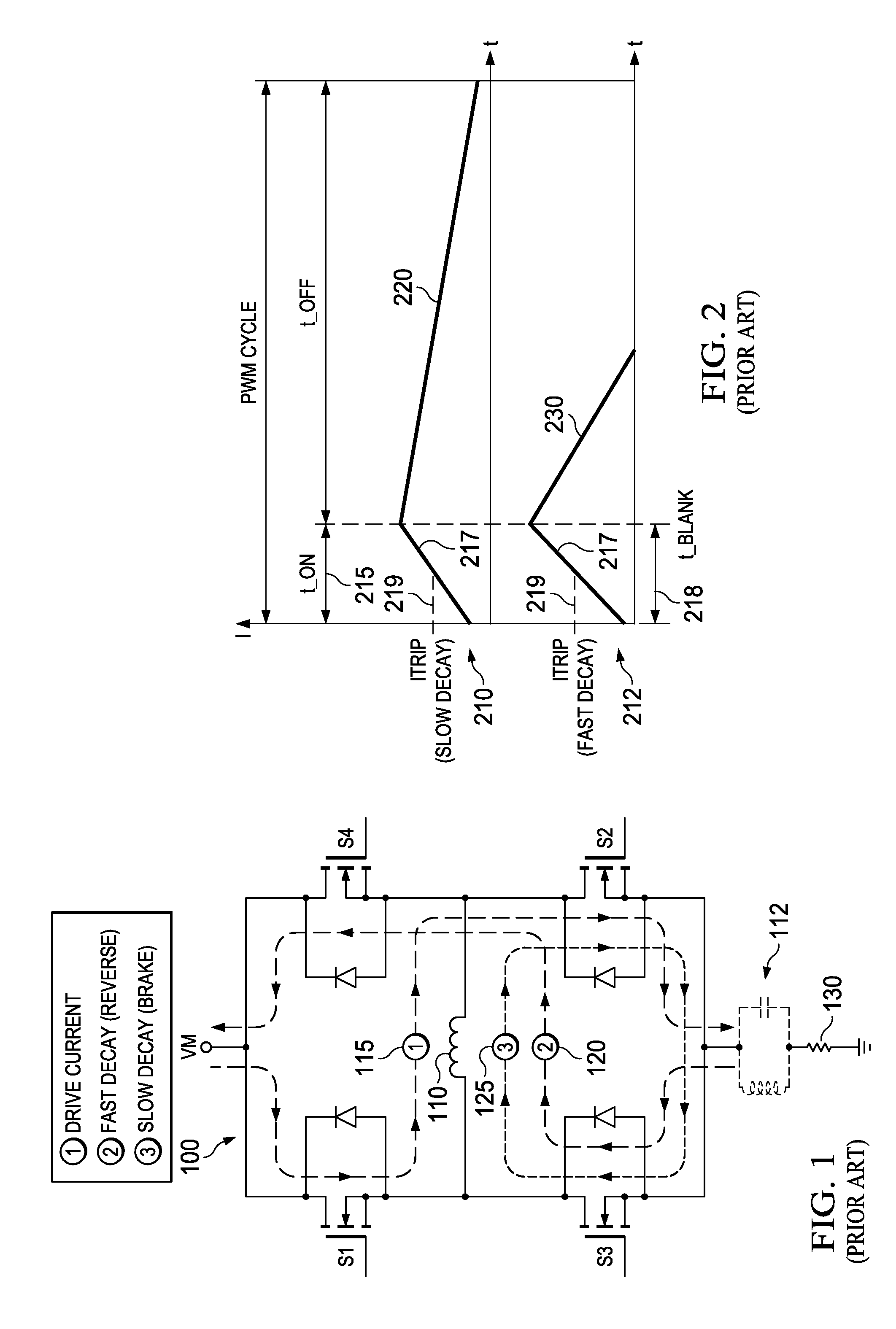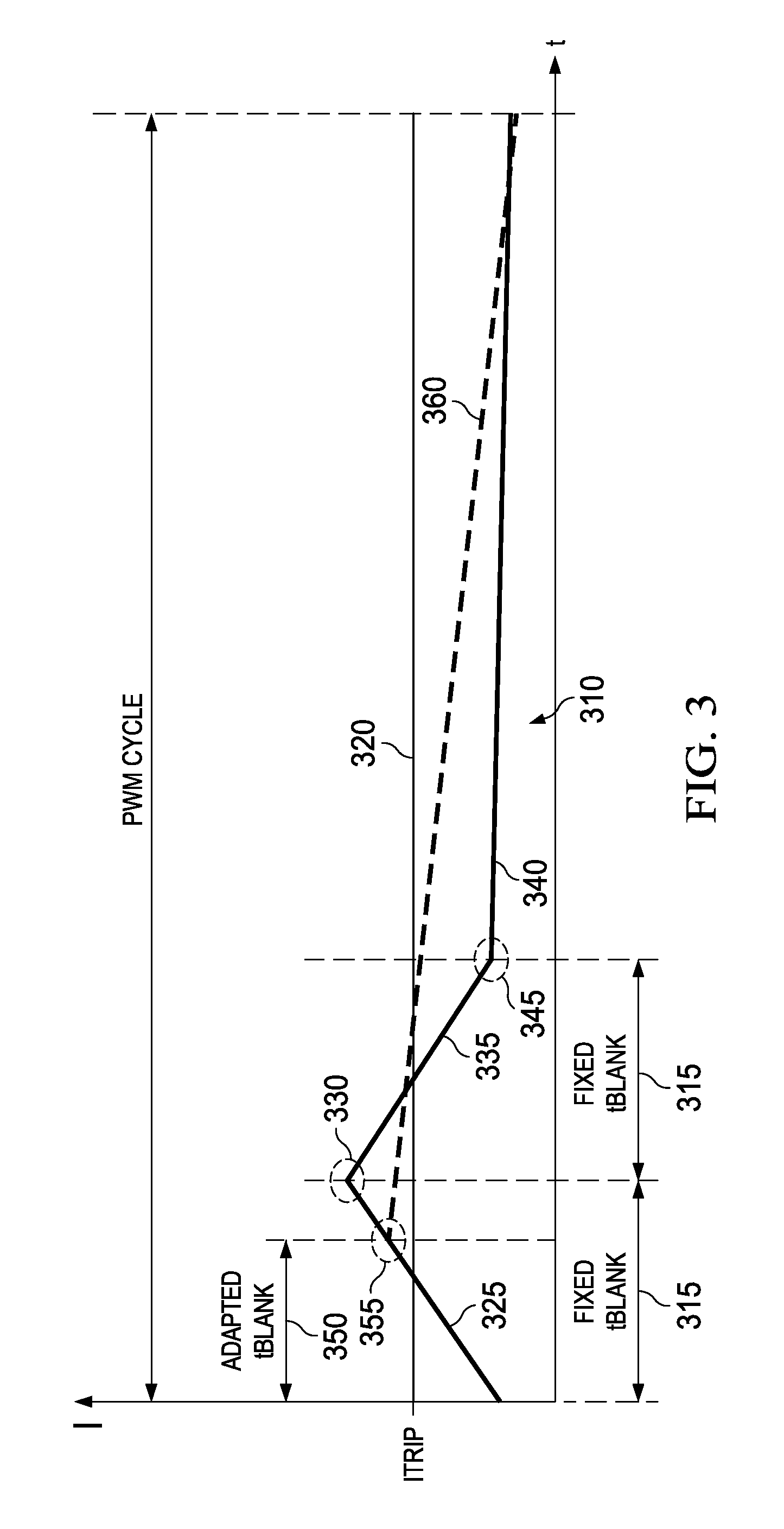Sensed motor winding current adapting blanking period between max/min values
a motor winding current and adapter technology, applied in the direction of dynamo-electric converter control, control system, electrical apparatus, etc., can solve the problem of reducing the magnitude of current, the number of steps in an electrical 360 degree revolution, and the resolution of micro-steps, so as to reduce the ripple in the current waveform, the current waveform is reduced, and the current level is higher.
- Summary
- Abstract
- Description
- Claims
- Application Information
AI Technical Summary
Benefits of technology
Problems solved by technology
Method used
Image
Examples
Embodiment Construction
[0027]FIG. 3 is a waveform diagram 310 comparing a stepper motor winding current waveform 340 resulting from fixed blanking periods 315 to a winding current waveform 360 resulting from a winding current level adapted blanking period 350 according to various example activities and embodiments of the invention. The drive current ramp-up 325 of the fixed blanking waveform 340 overshoots the ITRIP level 320 until the end 330 of the fixed blanking period 315. The overshoot occurs because during the fixed blanking period 315 the PWM controller ignores sensed current feedback signals that would indicate the point at which the drive current ramp 325 crosses ITRIP320. Finally, at the end 330 of the fixed blanking period 315, the PWM controller acts upon the sensed current feedback signals by terminating the overshooting drive current and switching the H-bridge to fast decay mode.
[0028]The latter operation results in the fast decay portion 335 of the fixed blanking period waveform 340 during ...
PUM
 Login to View More
Login to View More Abstract
Description
Claims
Application Information
 Login to View More
Login to View More - R&D
- Intellectual Property
- Life Sciences
- Materials
- Tech Scout
- Unparalleled Data Quality
- Higher Quality Content
- 60% Fewer Hallucinations
Browse by: Latest US Patents, China's latest patents, Technical Efficacy Thesaurus, Application Domain, Technology Topic, Popular Technical Reports.
© 2025 PatSnap. All rights reserved.Legal|Privacy policy|Modern Slavery Act Transparency Statement|Sitemap|About US| Contact US: help@patsnap.com



